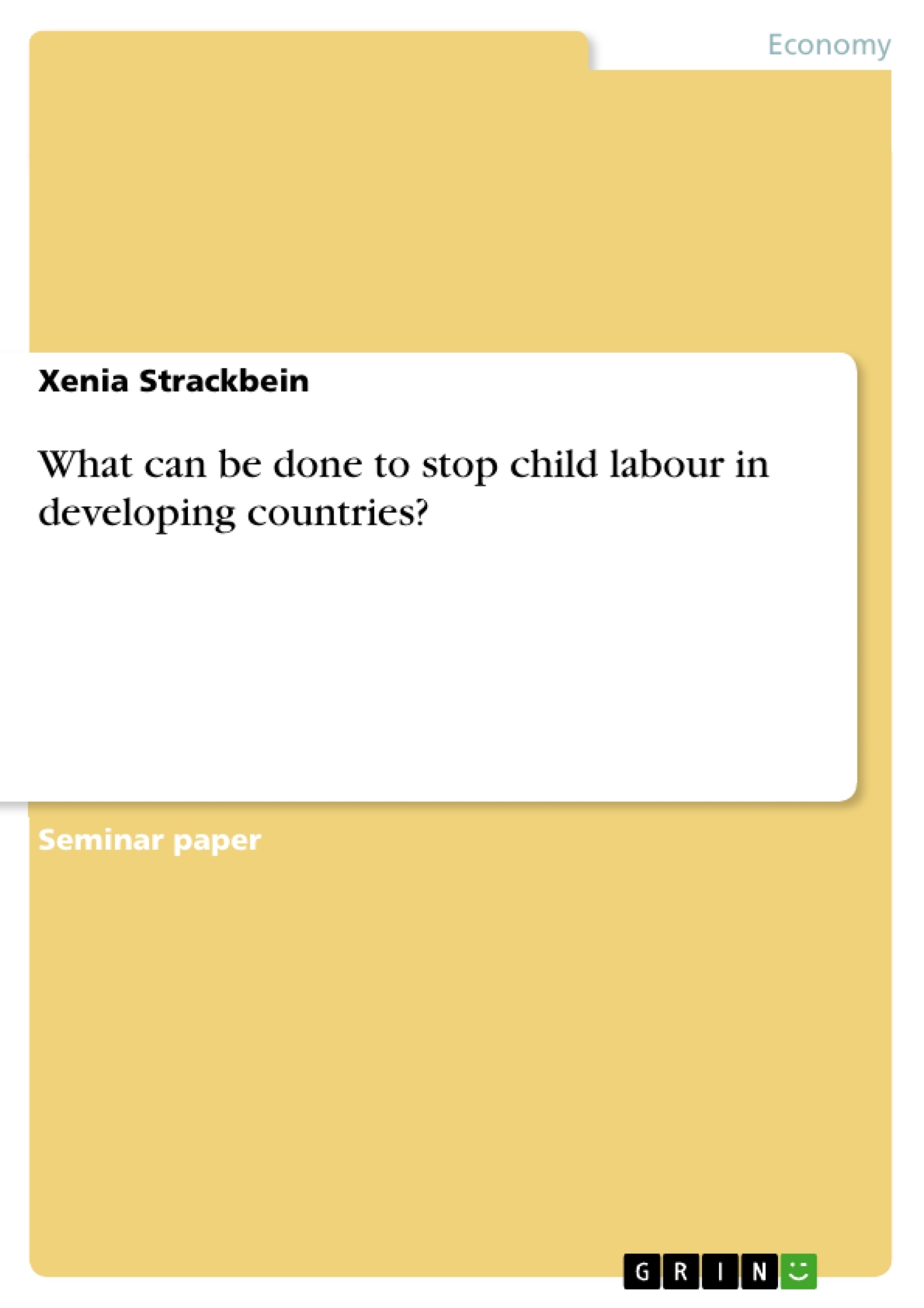In this work the reasons for child labour will be explained and the question of the responsibility will be answered. In order to answer the question "What can be done?" possible actions will be pointed out. It is also important to present different organizations which try to stop child labour. Moreover, the author gives an overview of the distribution of child labour in the world and in different sectors and shows two examples for child labour in Asia.
According to a statement of the United Nations Organization, 218 million children around the world between 5 and 17 years are employed as full-time workers, often under hazardous and dangerous working conditions. This fact shows the importance of combating child labour.
List of contents
List of tables
List of figures
1 Introduction
2 Theoretical frame of reference
2.1 Definition Child labour
2.2 Definition Developing nations
3 Distribution of child labour
3.1 Distribution in regions and countries
3.2 Distribution in sectors
4 Examples of child labour in Asia
4.1 India
4.2 Uzbekistan
5 Reasons for child labour
5.1 Poverty and unemployment
5.2 Limited education
5.3 Demand on cheap products
6 Responsibility
6.1 Companies
6.2 Government
6.3 Consumers
7 Possible actions against child labour
7.1 What companies, consumers and governments can do
7.2 Organizations fighting against child labour
7.2.1 FAIRTRADE
7.2.2 The United Nations and the ILO
7.2.3 UNICEF
8 Conclusion
Bibliography
- Quote paper
- Xenia Strackbein (Author), 2019, What can be done to stop child labour in developing countries?, Munich, GRIN Verlag, https://www.grin.com/document/542776
-

-

-

-
Upload your own papers! Earn money and win an iPhone X. -

-
Upload your own papers! Earn money and win an iPhone X. -

-
Upload your own papers! Earn money and win an iPhone X. -

-
Upload your own papers! Earn money and win an iPhone X. -

-
Upload your own papers! Earn money and win an iPhone X. -

-
Upload your own papers! Earn money and win an iPhone X. -

-
Upload your own papers! Earn money and win an iPhone X.

